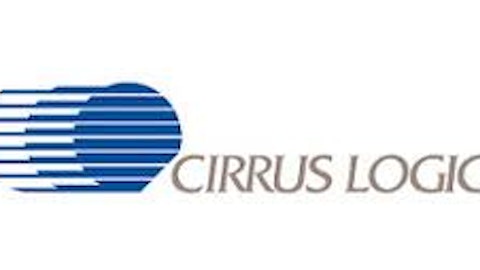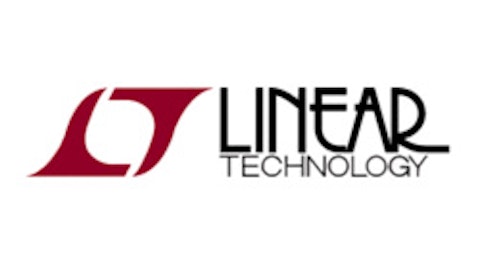Income investment is one of the more popular investment styles, and not without reason. The primary focus in this investment style is to invest in stocks that provide a steady dividend income along with a reasonable scope for capital appreciation. However, creating a good income-based portfolio is not as easy as it may appear, because identification of the right stocks to invest in requires a lot more than just looking for high dividends.

For getting the best from an income portfolio, it is necessary to pay attention to other metrics such as dividend yield, payout ratio, growth rate, and price-to-earnings. It must also be understood that comparison of stocks must be from within an industry and not across other industries, not even across industries within the same sector as well.
Today, I will take a look at the tech sector, with a focus on the semiconductor industry. Intersil Corporation (NASDAQ:ISIL) pays a quarterly dividend of $0.12 a share. Let us see if this is a good stock for including in an income based portfolio.
All financial data has been sourced from Yahoo! Finance and www.finviz.com
Intersil Corporation (NASDAQ:ISIL)
Intersil is engaged in the business of development, production, and marketing of analog and mixed-signal integrated circuits. The company develops products for the consumer market with a focus on application specific standard products and general purpose proprietary products for the industrial, consumer, computing, and communications markets.
It offers products for aviation and satellite systems, medical imaging, security surveillance, factory automation equipment, and automotive systems, personal computers, and consumer electronics, such as smart phones, tablets, displays, and other industrial and consumer electronic devices.
The market values Intersil at around $1.1 billion.
Absolute dividend vs. dividend yield
The dividend chart of Intersil Corporation (NASDAQ:ISIL) shows that the company has been paying a quarterly dividend of $0.12 for the last three years. However, if we view the dividend yield chart, we see that, despite the dividend remaining constant, the dividend yield went up as high above 9% and the current yield is 6.78% (5.49% as per Google Finance).
I discuss these figures simply to emphasize the importance of the two metrics while building an income portfolio – dividend yield and the fact whether or not a company has a history of increasing dividend payouts. In this case, Intersil has been paying dividend at the same rate in 2008. However, prior to that, it had been paying incremental dividends increasing it from $0.03 a share in 2003 to $.010 in 2007.But the matter of whether Intersil is a buy at its current price is still open for discussion.
Is Intersil worth buying?
On the face of it, Intersil Corporation (NASDAQ:ISIL) appears to be good as an income investment because 6.78% (5.49%) is a fairly handsome return on investment in an environment where banks are paying abysmally low interest rates. Let us look at the company’s balance sheet and other metrics.
The company is practically debt-free, with total liabilities amounting to $233.18 million on account of accounts payable and other liabilities. Against this, the total assets are $1.23 billion. However, almost 50% ($565.43 million) of total assets comprise of goodwill, a non-tangible asset that has been capitalized. Even after removing the goodwill amount, the company’s balance is still healthy as it has cash and cash equivalents amounting to $158.81 million, which is more than 65% of its total liabilities.
The worrying point is declining revenues and the fact that it posted a loss of $37.65 million for the year ended December 2012. Revenue has dropped from $822.4 million in fiscal 2010 to $607.87 million in fiscal 2012. There has been concurrent reduction in SG&A expenses, but not in the same proportion as the reduction in revenue.
If I were to buy Intersil, I would first check growth prospects. The trailing twelve month earnings-per-share is negative at $0.30. However, analyst estimates forecast a positive EPS of $0.29 for the next year, which translates into a growth 314.29%. However, estimated growth over the next five years is more realistic, as the company is expected to grow at an annual average rate of 12.50%. Even if we take that into account, the forward price-to-earnings ratio at CMP comes to 30.52, which in my opinion is on the higher side.





